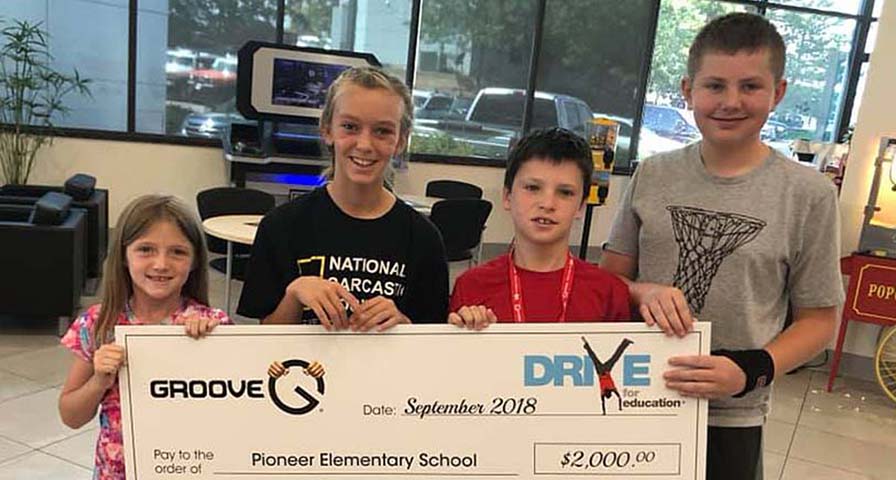When looking to add heart rate technology to their curriculum, the largest hurdle PE teachers face is often funding. Where will the money come from? What’s the process to request funding?
As a former PE teacher and coordinator, IHT Regional Vice President Eric Larson understands the challenges facing today’s teachers and administrators. With the end of the school year approaching, Larson offered some of the strategies he used to secure funding for different initiatives as a teacher and coordinator at Denver Public Schools:
-
- Learn about the different funding options available to purchase PE heart rate technology by researching district, state and federal databases to find available grants;
-
-
- Develop relationships with departmental leaders managing budgets; and
- Connect with district leadership to create presentations for funding decision-makers.
-
Teachers Have Funding Homework, Too
 While it remains essential for teachers to learn the ins and outs of technology such as the IHT ZONE and IHT Spirit System, that’s no longer enough. With school budgets tight and grants in high demand, teachers must also become funding experts.
While it remains essential for teachers to learn the ins and outs of technology such as the IHT ZONE and IHT Spirit System, that’s no longer enough. With school budgets tight and grants in high demand, teachers must also become funding experts.
During an informational webinar held May 1, Larson discussed the need for teachers to do that essential research, especially as it pertains to the Every Student Succeeds Act. Through Title IV, Part A, ESSA made $1.1 billion available to local school districts in 2018-19, an amount that increases to $1.3 billion in 2019-20.
“Whether you’re a teacher or a coordinator, it’s important that you stay up-to-date on what is happening with ESSA Title IV, Part A,” he said.
ESSA Title IV, Part A addresses “safe and healthy schools” and provides funding for initiatives designed to support a student’s well-rounded education, but unlike the popular PEP Grants of years’ past, Title IV, Part A is not reserved exclusively for PE teachers.
“While focused on a well-rounded education, health and PE is just one of the 17 subject areas that qualify for ESSA Title IV, Part A funding,” Larson explained.
Seek Out Information Technology Allies

When speaking about the ZONE and Spirit System, tools that teachers find effective in motivating students to maximize the time they spend exercising at an elevated heart rate and improving their fitness, Larson recommends forming a partnership with the Information Technology (IT) director.
At Denver Public Schools, Larson worked closely with the technology director throughout the school year, first to apply for grants and second to make sure all of the technology department’s funding had been utilized.
“Especially in April and May, because that’s the time they are making final decisions about spending down the budget,” he said. “Maybe they’ve bought all the Chromebooks and funded all of the infrastructure in the district, and they still have money left over.”
Work Closely With Other Departments
Larson’s networking never stopped with the IT director. Teachers and coordinators view new tools as essential additions to the curriculum, so he also worked closely with the district’s curriculum director. He also partnered with the wellness coordinator, a relationship that proved particularly rewarding.
“The wellness department is an important one,” Larson said. “Through the wellness coordinator, we discovered a grant – the Health Diversity Grant offered by the Colorado Department of Public Health and Environment.”
At the wellness coordinator’s prompting, Larson researched the grant and learned that no PE department had ever applied, much less won it. The grant criteria seemed aligned with Larson’s curriculum – improving student wellness through moderate-to-vigorous physical activity – and his application proved successful.
“We applied for the grant – we were the first PE department to apply for it – and we won it,” Larson said. “It was $750,000 over three years.”
Cultivate and Maximize District-Wide Relationships
If not for a tip from a colleague, Larson may never have known about the Health Diversity Grant that proved so fruitful for his district.
“You need to reach out and create relationships in the district,” Larson said. “When you develop those relationships, they may come to you with ideas that may fit for your department or also when they have money left over at the end of the year.”
The IT director approached Larson several times to ask about ways to spend his remaining budgeted funds.
“Many times that director would come to me toward the end of the fiscal year and let me know he had money left over and ask if I had needs,” Larson said. “Heart rate monitors fit right into that project for both PE and technology.”
Larson said teachers should also build relationships with technology, wellness, and district grant office colleagues.
“One of the things I always heard when I would work with the folks in the grant office was that ‘you know, teachers can talk to us too,’” he recalled.
Teachers conduct the most research on the technology they want to add to their curriculum. They submit their proposal to their department head and rely on the department head to carry the proposal to the funding decision-makers.
“Teachers are often the ones with the most expertise on the tools that they’ve asked for,” Larson said. “They need to feel comfortable coming to the table with the PE coordinator when the proposal is being discussed for funding.”
First-hand knowledge can make the difference in convincing decision-makers to fund your proposal.
Seeking IHT Spirit System information?
[contact-form-7 id=”3054″ title=”How’d you find us?”]
[turbo_widget widget-prefix=pw_call_to_action&obj-class=PW_Call_To_Action&widget-pw_call_to_action–text=%5Bbutton+href%3D%22ihtusa.com%2Fzone%22%5DIHT+Zone+Heart+Rate+Monitor+Demo%5B%2Fbutton%5D&widget-pw_call_to_action–button_text=]


